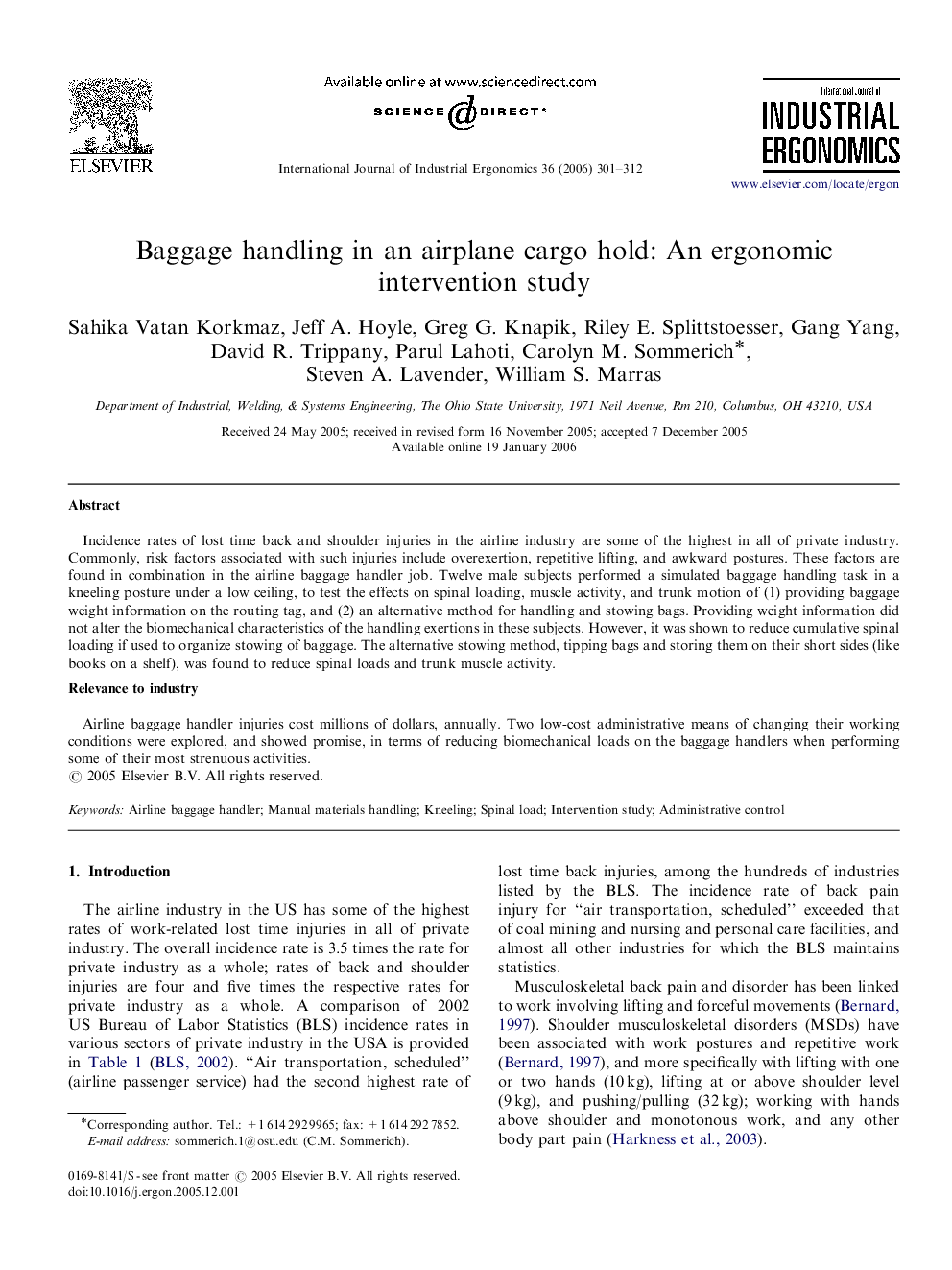| Article ID | Journal | Published Year | Pages | File Type |
|---|---|---|---|---|
| 1096414 | International Journal of Industrial Ergonomics | 2006 | 12 Pages |
Incidence rates of lost time back and shoulder injuries in the airline industry are some of the highest in all of private industry. Commonly, risk factors associated with such injuries include overexertion, repetitive lifting, and awkward postures. These factors are found in combination in the airline baggage handler job. Twelve male subjects performed a simulated baggage handling task in a kneeling posture under a low ceiling, to test the effects on spinal loading, muscle activity, and trunk motion of (1) providing baggage weight information on the routing tag, and (2) an alternative method for handling and stowing bags. Providing weight information did not alter the biomechanical characteristics of the handling exertions in these subjects. However, it was shown to reduce cumulative spinal loading if used to organize stowing of baggage. The alternative stowing method, tipping bags and storing them on their short sides (like books on a shelf), was found to reduce spinal loads and trunk muscle activity.Relevance to industryAirline baggage handler injuries cost millions of dollars, annually. Two low-cost administrative means of changing their working conditions were explored, and showed promise, in terms of reducing biomechanical loads on the baggage handlers when performing some of their most strenuous activities.
